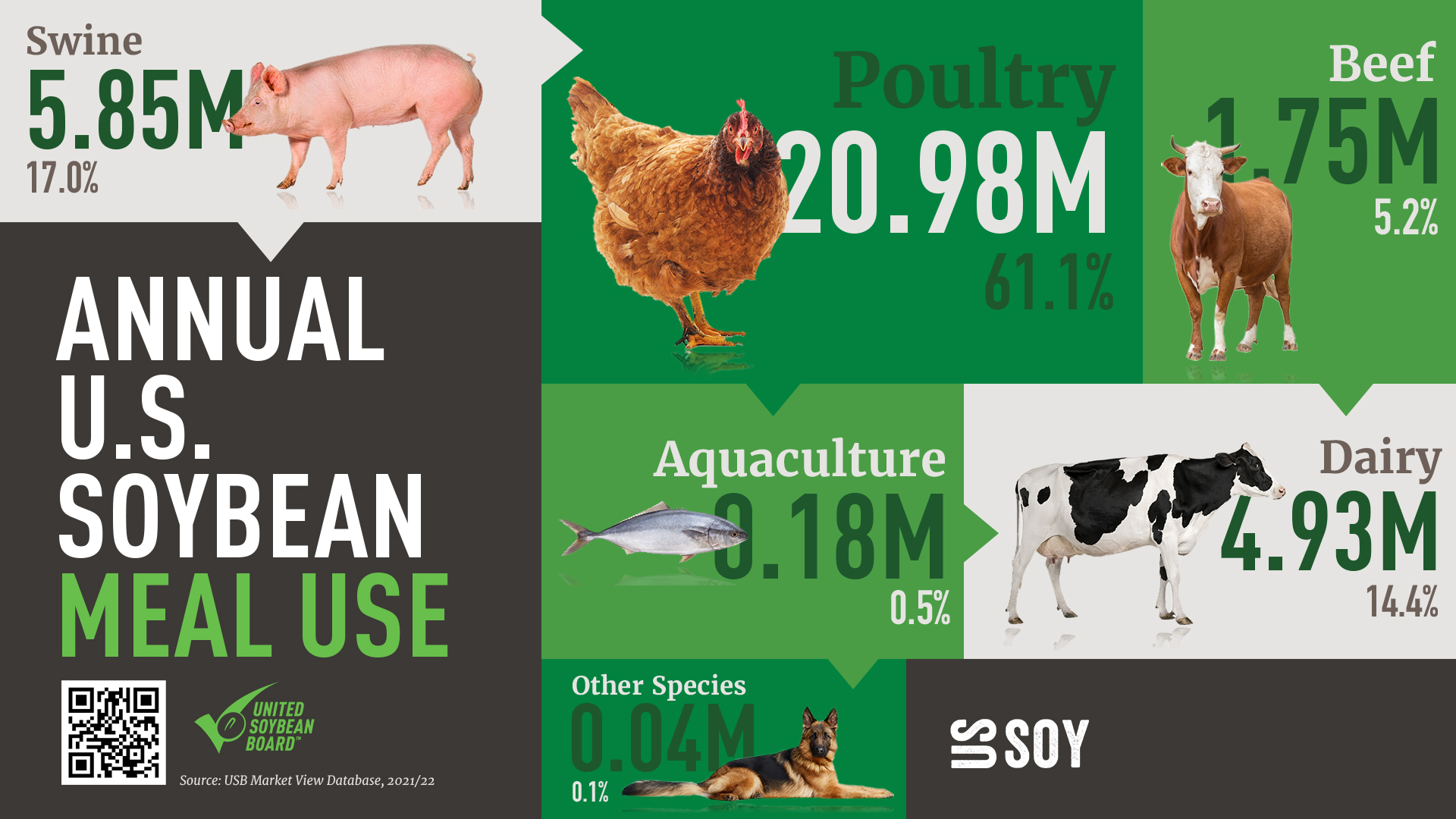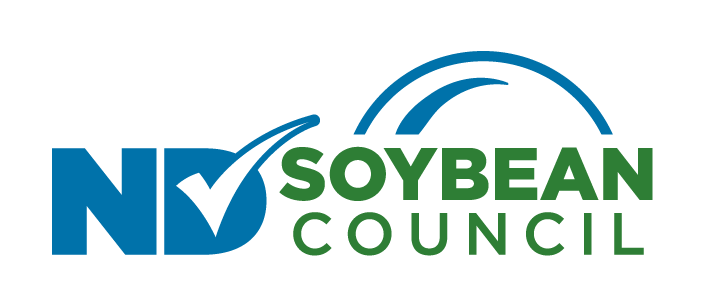17 May The Sky is the Limit for North Dakota Livestock
The ND Soybean Council Continues to Support Animal Agriculture Industries
North Dakota is poised to play a much larger role in feeding the nation’s livestock. With the in-state processing capacity growing, North Dakota has the potential to not only feed more animals around the world, but the state also has the opportunity to grow their domestic livestock production.
Until recently, most North Dakota soybeans were loaded on a train and sent to distant destinations through ports in the Pacific Northwest. Now, North Dakota is in a position where more soybeans will be processed locally. For many years, soybeans were crushed for the meal they provided. The entire processing dynamic has changed. Soybean oil is now the driver behind the growth of soybean processing as the demand for low-carbon fuels, such as renewable diesel and sustainable aviation fuel, grows. The increased processing means that soybean meal will be readily available to be consumed locally.
“The sheer volume of feed that will be available in the state is massive,” says North Dakota Soybean Council (NDSC) Director Evan Montgomery of Grand Forks. “Over the next decade, North Dakota has the potential to boost its livestock population significantly, positioning itself as a key player in the industry.”
In celebration of Beef Month in May and Dairy Month in June, the North Dakota Soybean Council (NDSC) proudly stands behind the state’s livestock producers, with its strategic plan including priorities to help responsibly grow the animal ag sector in the state.
“Our board regularly receives, and funds market development initiatives and research projects designed to support animal agriculture,” says Montgomery. “As directors, we’re committed to partnering with the meat and poultry industries in order to increase the demand for U.S. meat exports. We’re also working with domestic feeding operations to help them understand the value of including soybean meal in feed rations. With the vast amounts of soybean meal that will be available in North Dakota, we support the expansion of a viable livestock supply chain in the state.”
In fiscal year 2024, the NDSC is supporting livestock research projects aimed at optimizing livestock nutrition and management practices, as well as the development of soymeal-based baling twine with high digestibility.
The NDSC has demonstrated and continues to show strong commitment to supporting projects that provide essential data for farmers and stakeholders considering livestock production expansions. This includes evaluating the economic feasibility of swine farrowing and finishing operations in North Dakota. Beyond these efforts, the NDSC actively collaborates on soy market development with the North Dakota Livestock Alliance and the U.S. Meat Export Federation. Additionally, the NDSC is involved in the establishment of a new swine facility at North Dakota State University and continues to support both domestic and international livestock programming in partnership with the U.S. Soybean Export Council.
“As a grain farmer with an extensive animal agriculture background, I see domestic livestock production as another source of demand for my soybeans; this market need is not directly affected by tariffs, water levels on the Mississippi River, or export shipping rates,” says Montgomery. “Animal ag generates a local, steady market that has the potential to benefit both the livestock producer and the soybean farmer.”
Montgomery continues, “I sit on the NDSC’s market development committee, and its view on this topic is that the more animals which are in the state and are working through the system, the more feed is going to be used. That consumption is good for us as soybean farmers, good for our bottom line and good for the value of soybeans. Livestock production also offers a way for farms to diversify and to bring even more family members into the operation.”
Montgomery concludes, “It is an exciting time for North Dakota’s agriculture sector. I believe that the state’s soybean industry is well positioned to support a rapid expansion for the livestock sector.”
###

###


Sorry, the comment form is closed at this time.